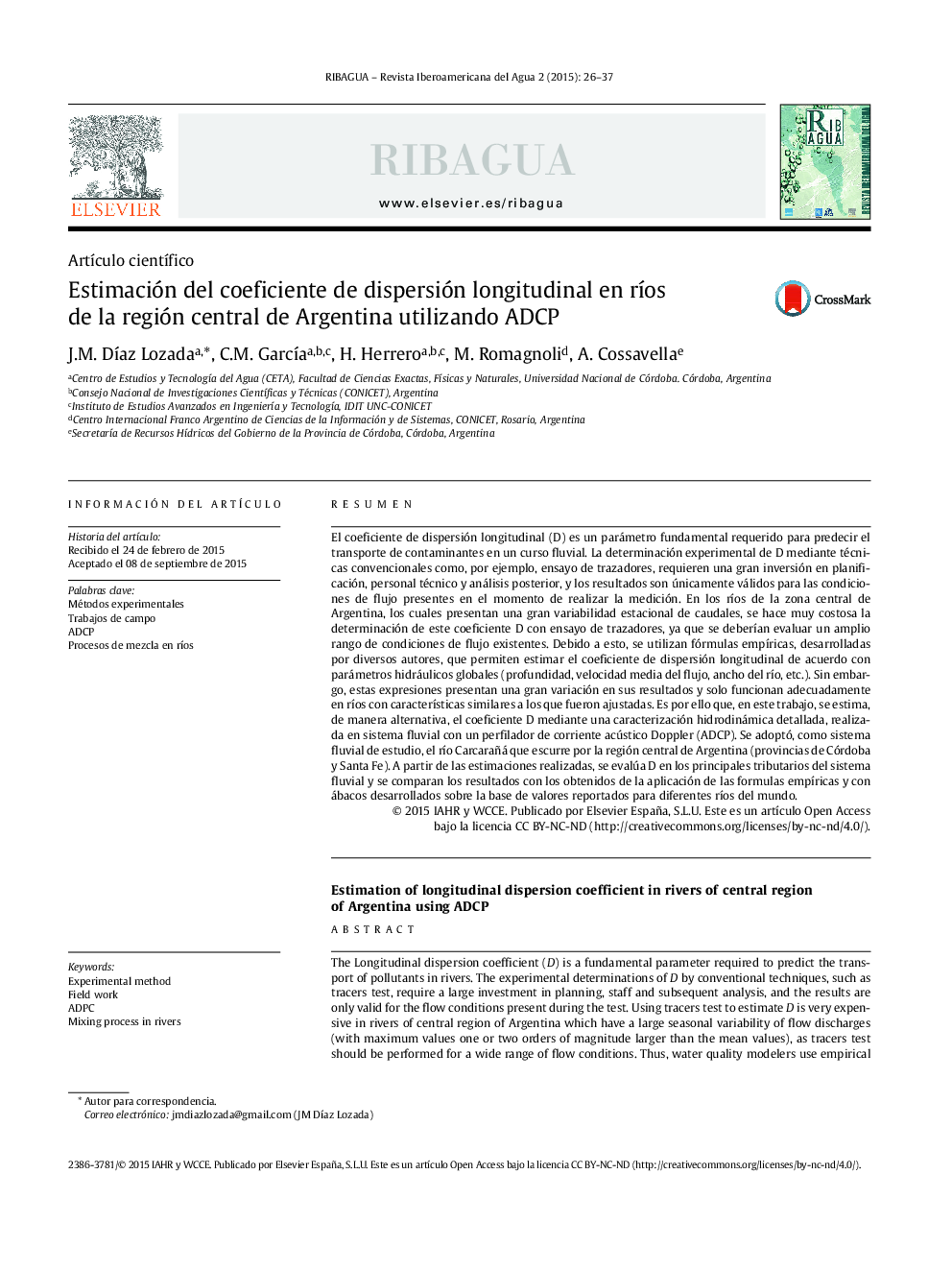| Article ID | Journal | Published Year | Pages | File Type |
|---|---|---|---|---|
| 1727805 | RIBAGUA - Revista Iberoamericana del Agua | 2015 | 12 Pages |
Abstract
The Longitudinal dispersion coefficient (D) is a fundamental parameter required to predict the transport of pollutants in rivers. The experimental determinations of D by conventional techniques, such as tracers test, require a large investment in planning, staff and subsequent analysis, and the results are only valid for the flow conditions present during the test. Using tracers test to estimate D is very expensive in rivers of central region of Argentina which have a large seasonal variability of flow discharges (with maximum values one or two orders of magnitude larger than the mean values), as tracers test should be performed for a wide range of flow conditions. Thus, water quality modelers use empirical formulas developed by various authors estimating the longitudinal dispersion coefficient based on global hydraulic parameters (mean flow depth and velocity, river width, etc.). However, these formulas show large scatter in the results and only perform properly in rivers with similar characteristics that were calibrated. On that basis, an alternative estimation of the coefficient of longitudinal dispersion is performed in this paper through a detailed experimental hydrodynamic characterization performed in a fluvial system with an Acoustic Doppler Current Profiler (ADCP). The Carcarañá River, flowing through the Cordoba and Santa Fe provinces in Argentina, has been selected as a study system. The results of this paper include the values o longitudinal dispersion coefficients in different streams of the analyzed fluvial system which are the compared with values estimated using empirical formulas and plots developed using data from different river systems around the world.
Keywords
Related Topics
Physical Sciences and Engineering
Engineering
Ocean Engineering
Authors
J.M. DÃaz Lozada, C.M. GarcÃa, H. Herrero, M. Romagnoli, A. Cossavella,
